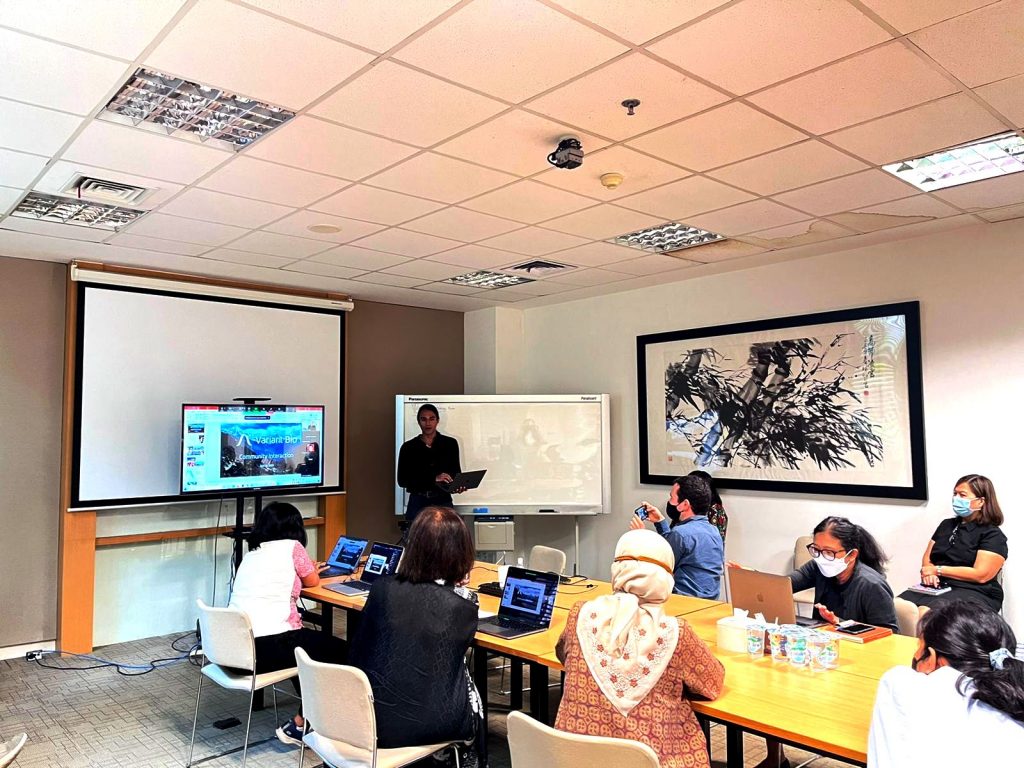MRIN,together with Variant Bio and University of Cambridge held a seminar about Research Collaboration on Indonesian Population Genome Diversity
On April 20th, 2022, Mochtar Riady Institute of Nanotechnology (MRIN) welcomed Noah Collins, MA., from Variant Bio, and Dr. Guy Jacobs from the University of Cambridge to give lectures for MRIN’s researchers and the general public. Together with MRIN's own postdoctoral research fellow, Pradiptajati Kusuma PhD., they gave three presentations addressing community engagement in genomic research, Indonesia’s genetic diversity studies, and its under-researched nomadic ethnic group.
The lectures started with Mr. Collins explaining the importance of strengthening the partnership with the communities of the research subject. This could be achieved by community-based participatory research (CBPR). CBPR is the way to interact with communities that empowers them. It allows them to feel that they are trusted, and they can see themselves as a partner, not just as the numbers in the study. Gaining the trust of the people on the ground and doing the research project collaboratively are also vital measures to ensure the research's success. The research should be distinctively and linguistically conveyable in the community’s language, Mr. Collins asserted. Besides providing culturally digestible informed consent and information about the studies, the research team is also responsible to publish the results in a cohesive summary. All in all, good and ethical research can only exist through continuous effort, respect, trust, and communication between the research institutes and the community. In that spirit, Variant Bio and MRIN have started a research collaboration to understand local genetic variants related to diseases.

Lorem ipsum dolor sit amet
Lorem ipsum dolor sit amet
The second lecture started with M r. Jacobs introducing the Indonesian Genome Diversity Project (IGDP). IGDP is a dataset compromised of complete human genomes from individuals from multiple islands in Indonesia. The genomes were sequenced to high depth (30x). This dataset serves as the answer to the questions of human migration history and adaptation in Island Southeast Asia (ISEA) and beyond. It aims to capture a wide range of diversity across the region. The work on samples from more than 1000 communities across Indonesia genomics, is led by Prof. Herawati Sudoyo. From the recent analysis of Indonesia's genetic diversity, it can be inferred that the genetic similarities are appropriate to the geographical locations of Southeast Asian islands. The closer the two islands are, the more similar their populations are. Genetic diversity research could also show archaic introgression, resulting from the interaction between populations in the past. Introgression happens in blocks and detecting those blocks could tell us about selection, the timing of admixture, and the phylogeny of source populations. Those blocks can be detected by finding the runs of variation that is different from the human group but similar to the archaic genome. The usual reference groups are human reference (Africans) and archaic genome (Altai Denisovan/Altai Neanderthal) of admixture. It is crucial to study these archaic blocks because they can visualize more unique variations and important phenotypes, including diseases. Dr. Jacobs also shared genomic research of Punan communities in Borneo a collaboration with Prof. Sudoyo’s group and Prof. Steve Lansing (Santa Fe, Stanford) in 2018. The Punan communities are known for preserving their hunter-gathering practices and nomadic lifestyle. To further understand the Punan hunter-gatherer communities of Borneo, Dr. Jacobs will continue collaboration with Prof. Sudoyo’s team, supported by European Research Council (ERC) grant. A collaborative project supported by the ERC called MOBILE aims to study the effect of traditional and contemporary mobility patterns. This study will combine GPS, behavioral and social network analysis with genomics on five hunter-gatherer communities in Indonesia. This study aims to discover the connection between the microbiome, genetic variation, and physical/health phenotypes.

Lorem ipsum dolor sit amet
Lorem ipsum dolor sit amet
Dr. Kusuma's lecture presented his ongoing research on the Punan Batu community. They are the last-known mobile hunter-gatherers on the Borneo island – and probably in all of Asia. From the current findings, it is shown that Punan is both a genetic identity and a cultural identity. The Punan Batu is not the reversion of Austronesian farmers, but they are the ancient divergence from Austronesian and mainland Southeast Asian (MSEA) ancestries. The Punan Batu community does not have shared derived Kankanaey-associated ancestry which is the identifying trait of the Austronesian source population. However, more data from the Punan groups are needed to further improve the analyses and validate the conclusions reached. Dr. Kusuma will study further the genomics and behavioral ecology aspects of Punan Batu communities through a research grant that he obtained from the Wellcome Trust, United Kingdom.

